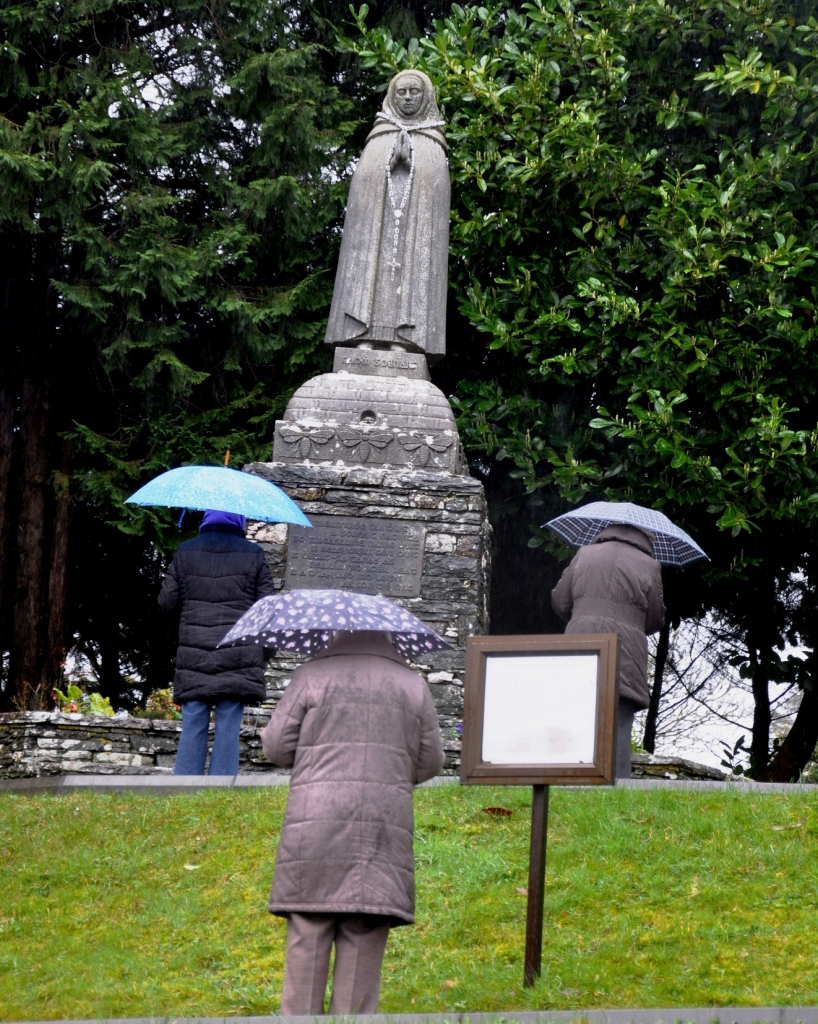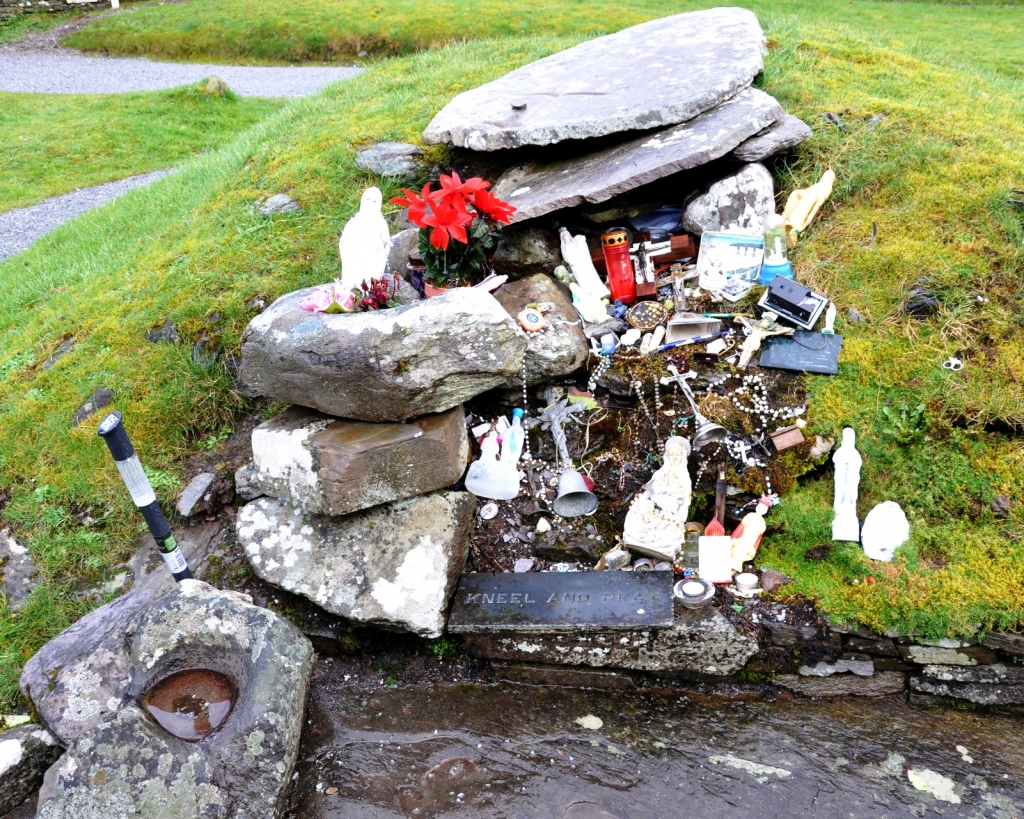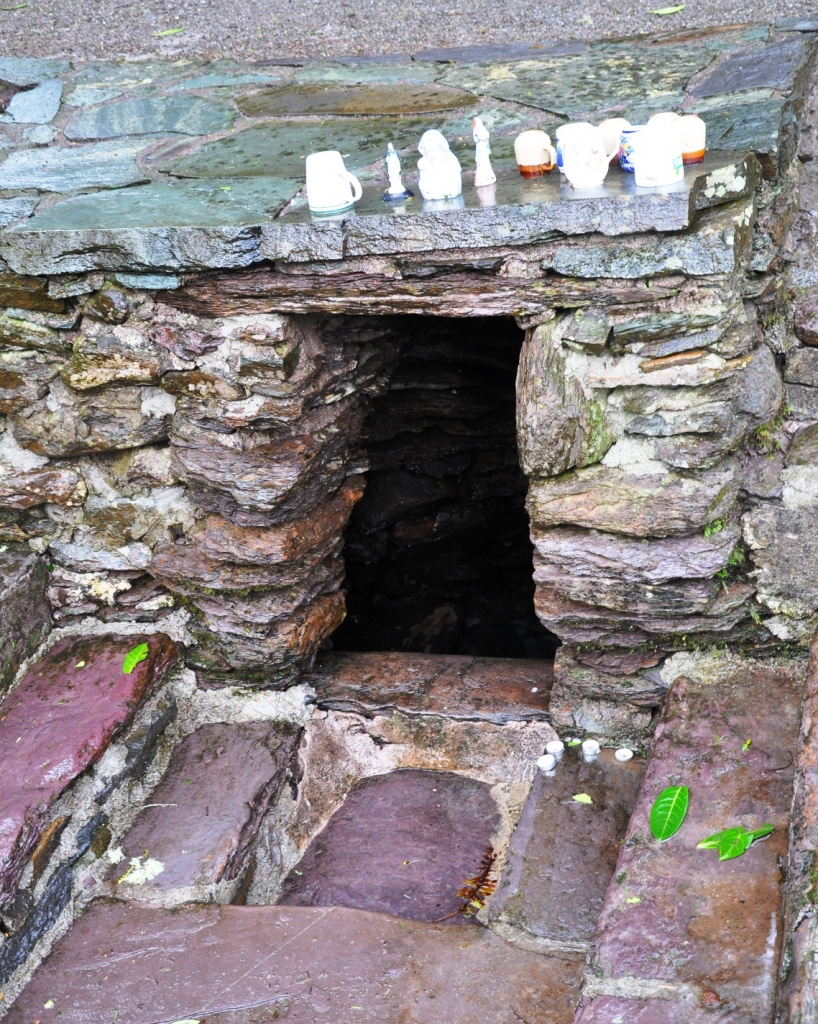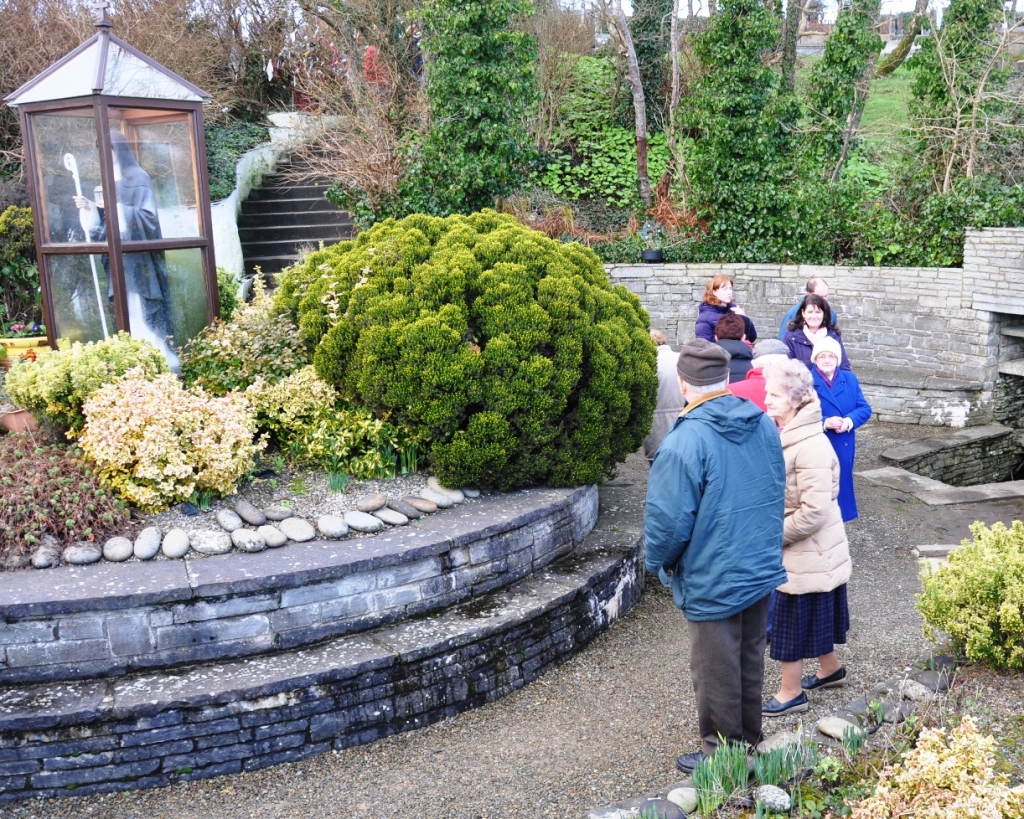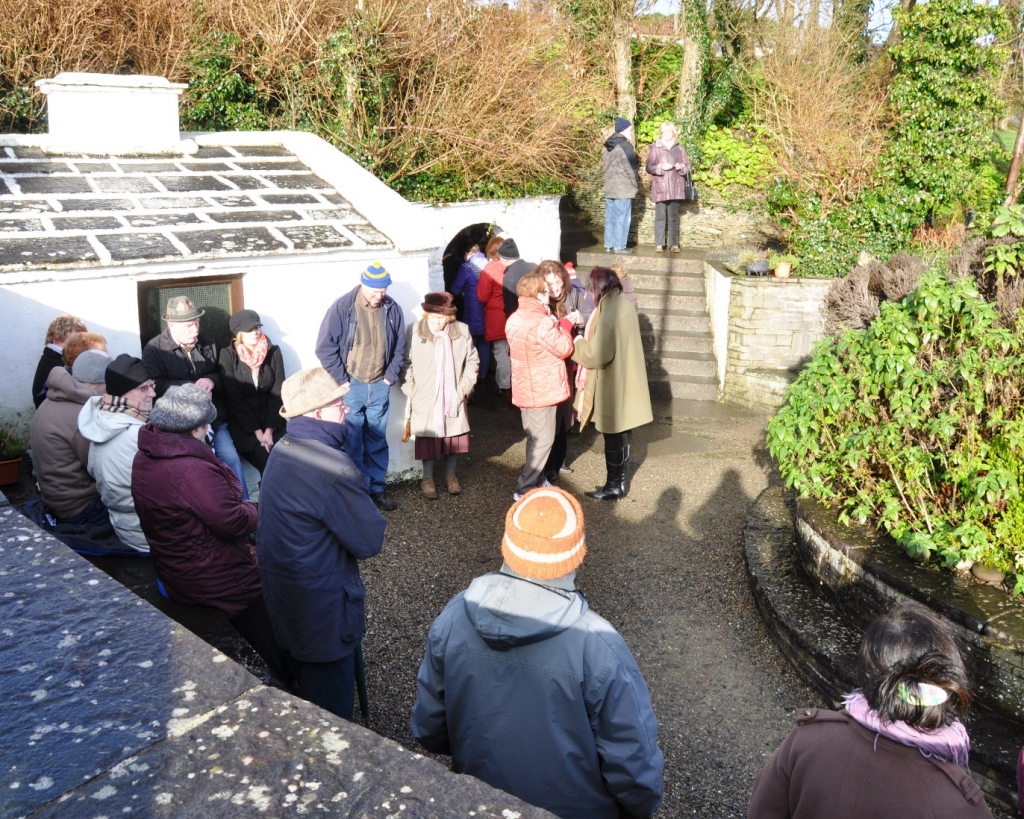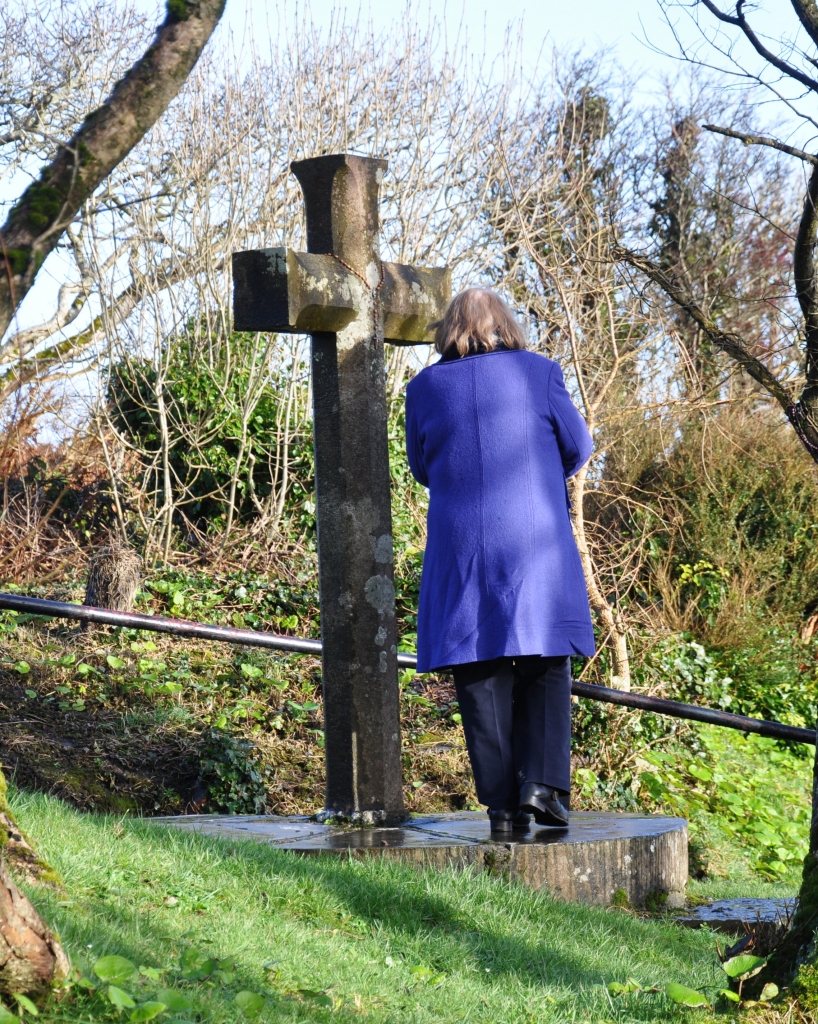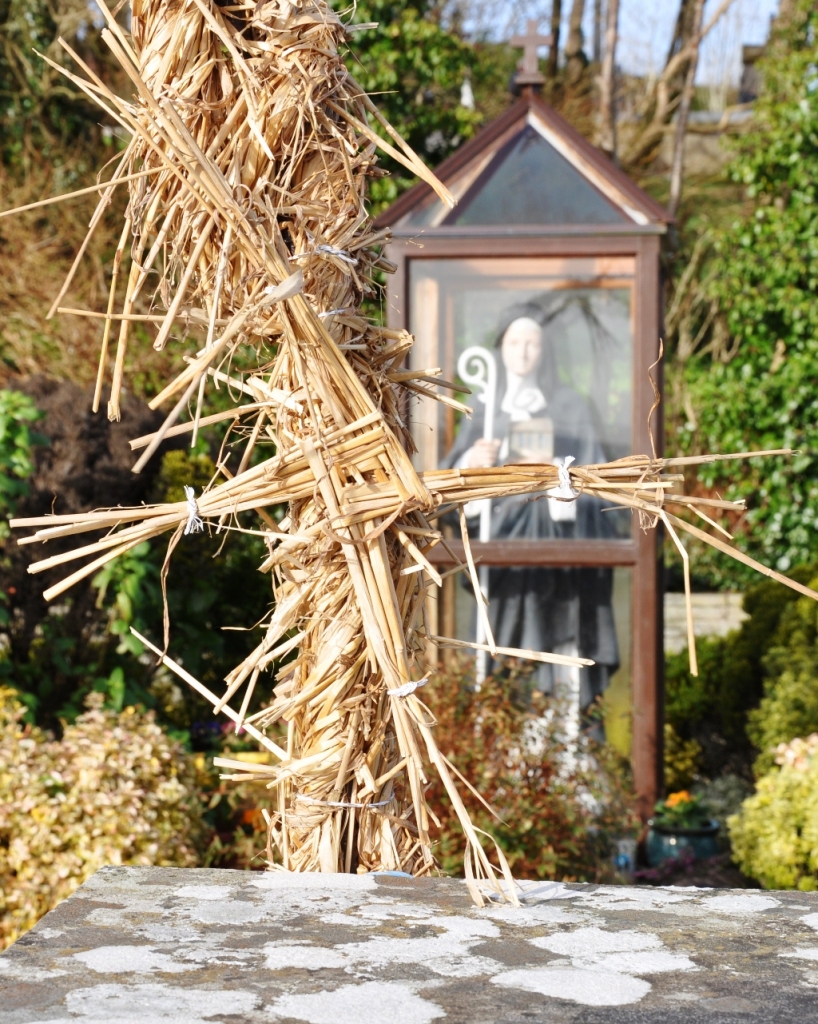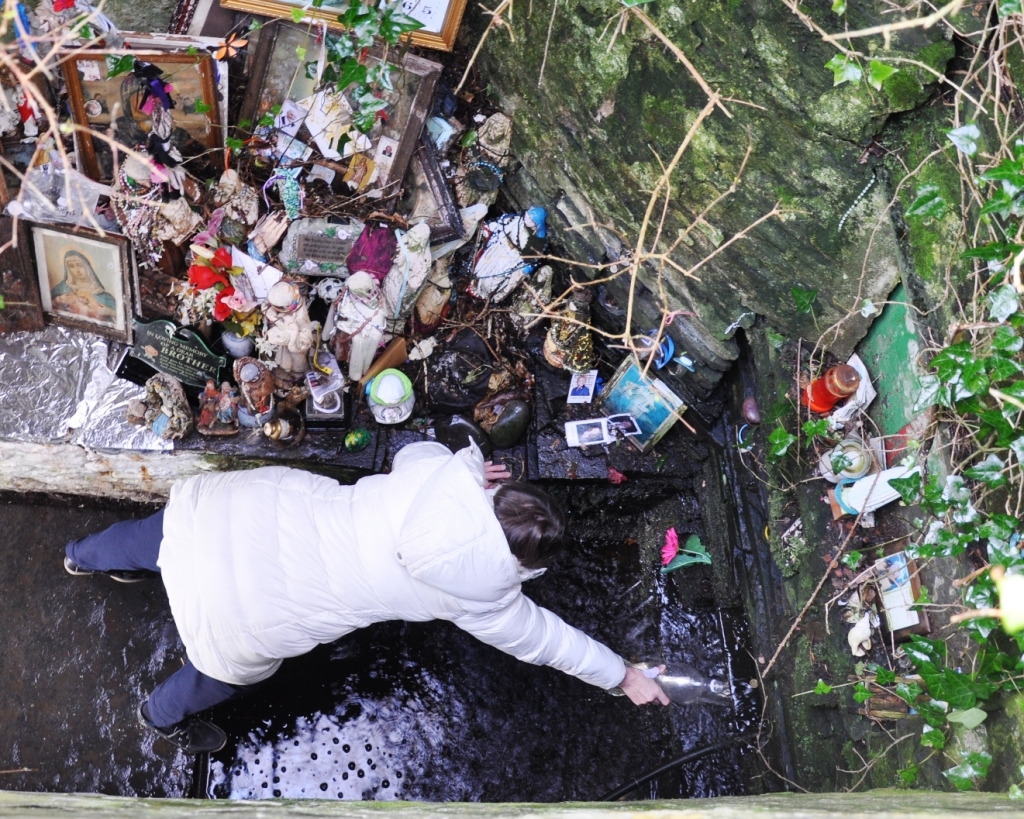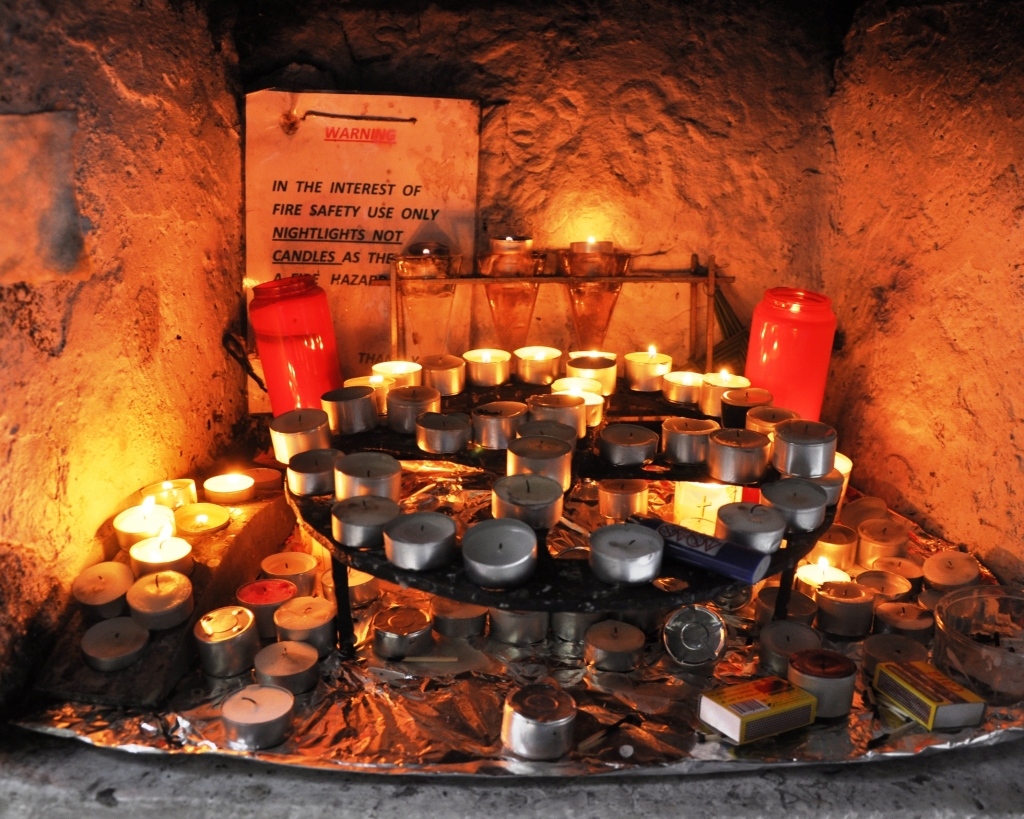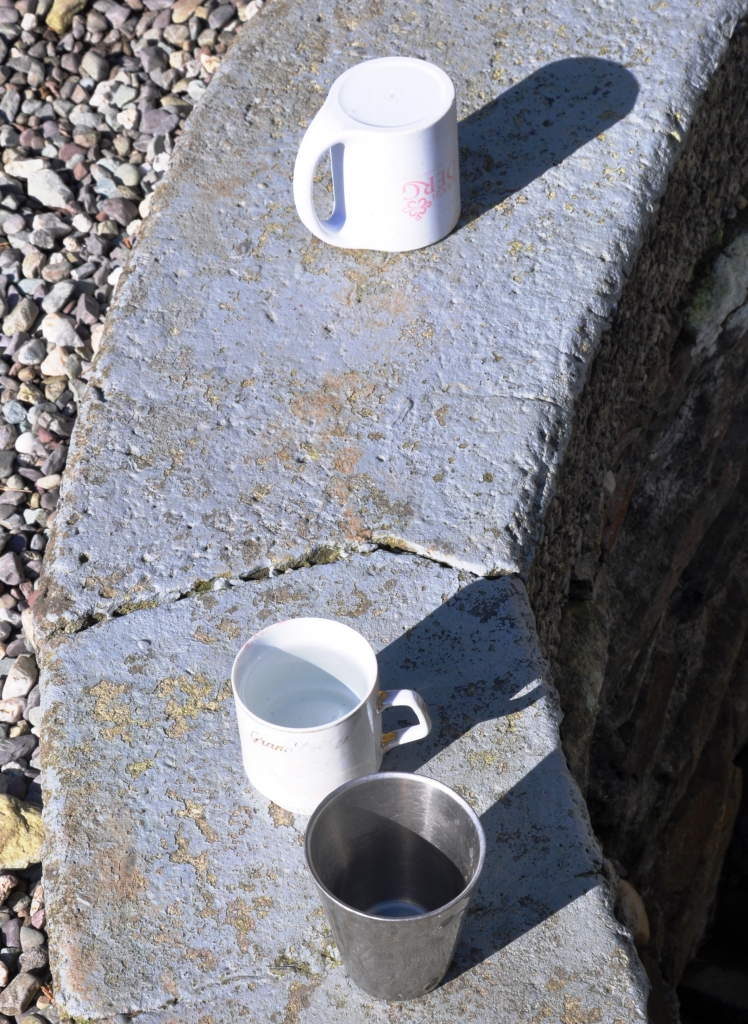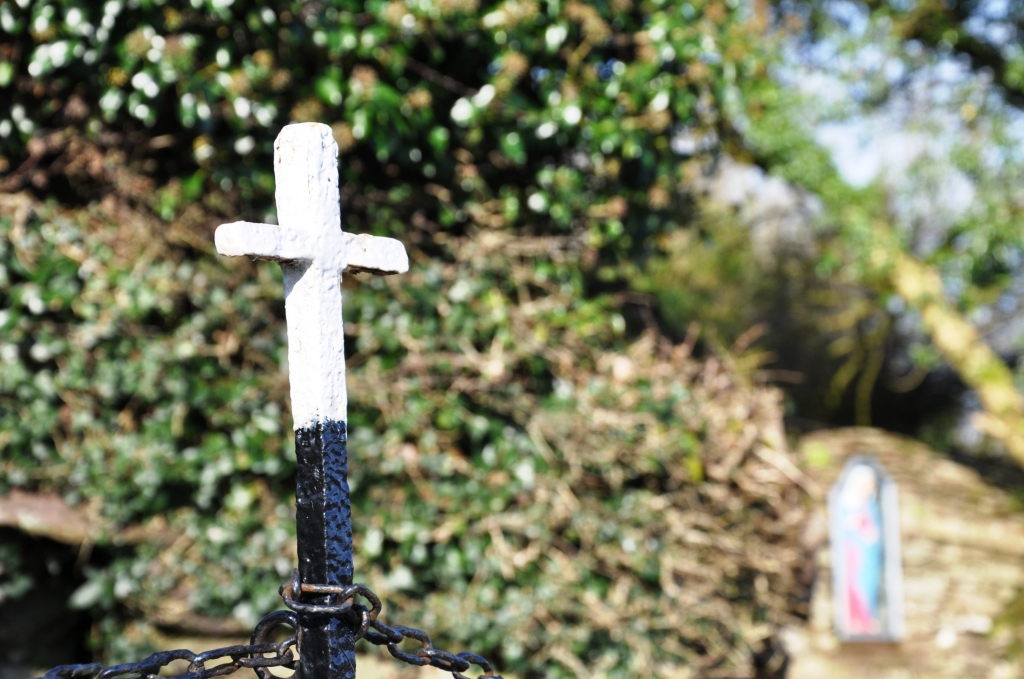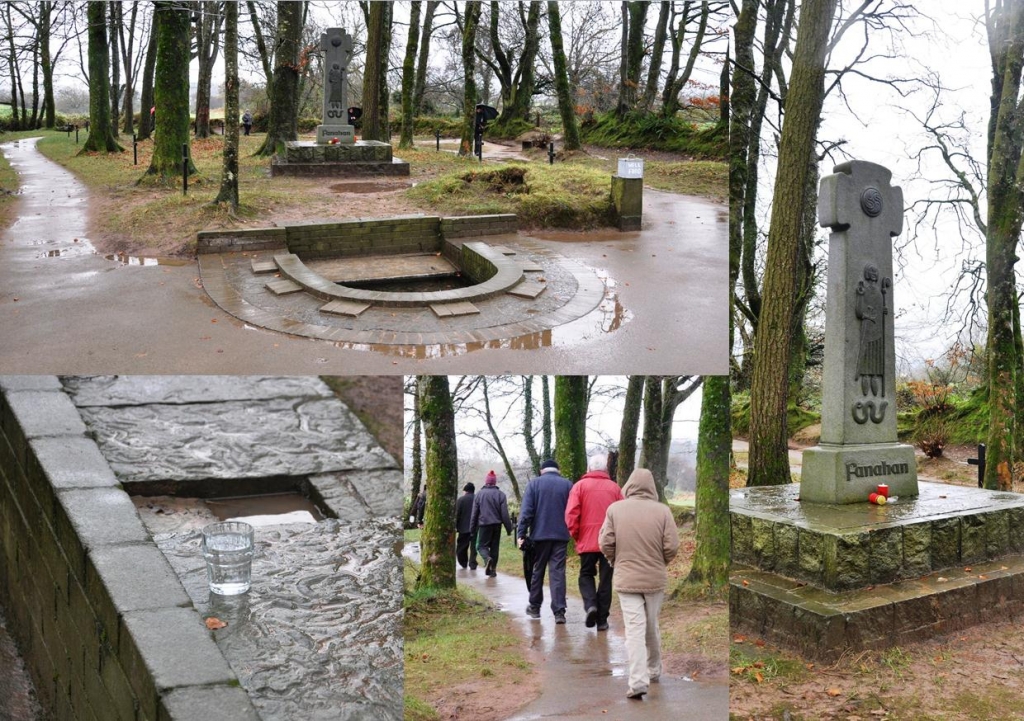Sunday Well, Raffeen, Co. Cork
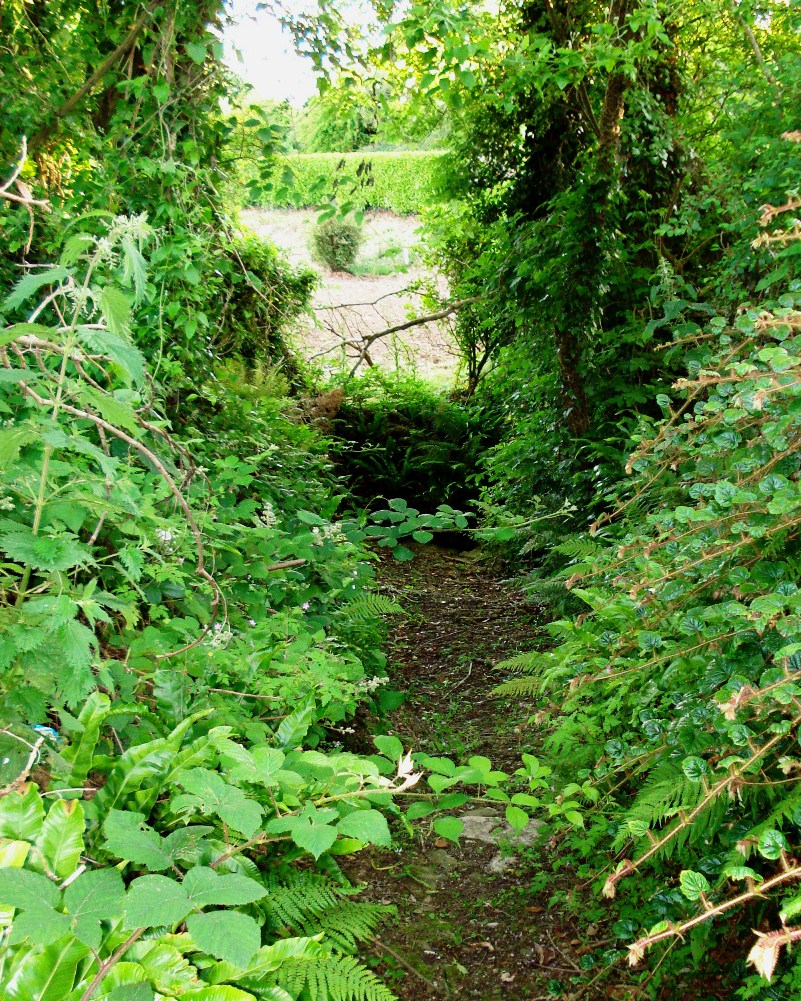
A photo of the short path leading down to the well, which has briars and different plants growing into it. The path is barely noticeable from the road.
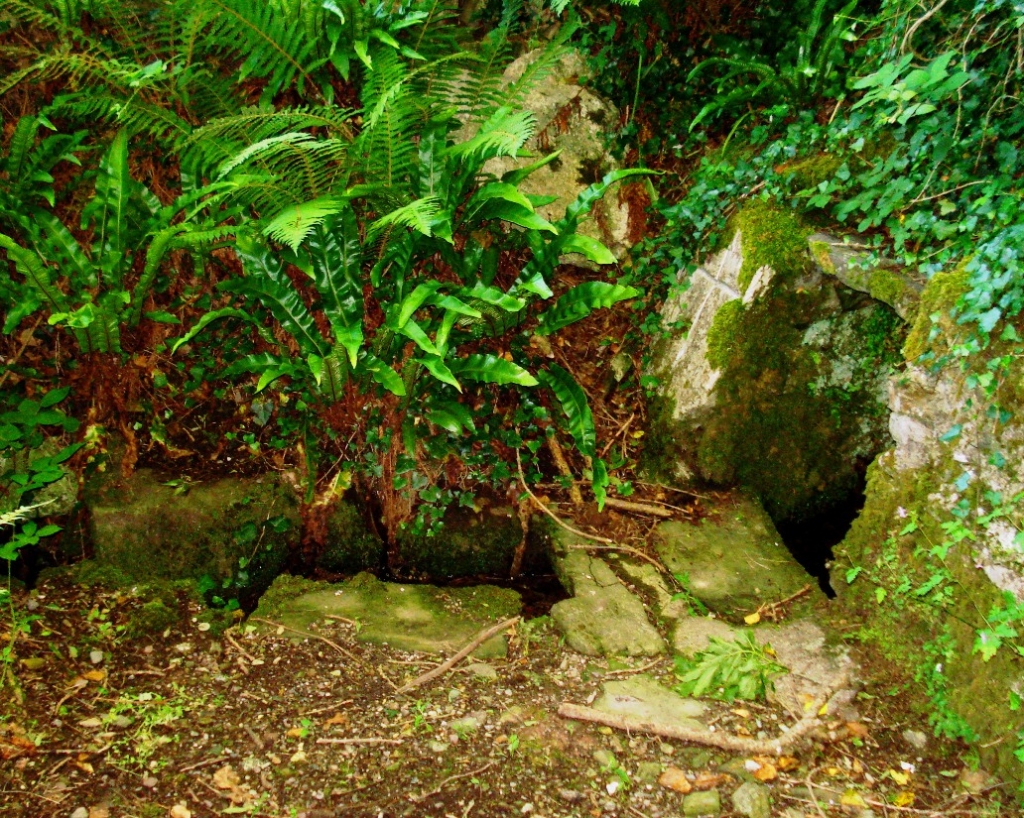
A photo showing the holy well at the end of the path. The well, on the right, is set into the hillside and is surrounding by a simple stone structure with a stone drain channel, capped by a slab at the well, running directly out from it. On either side of the well two rocks, which are part of the setting, each have a cross ingrained in them from pilgrims using stones.
The well, referred to as ‘Sunday Well‘ in maps, is small and pleasant, although it looks like it is rarely used. The archaeological record refers to rounds which were performed their in the past. The site is clean and tidy, but the path down is slightly overgrown and unless you were looking for it, it is unlikely that you would see it. It seems as though it may be visited by a small number of people, presumably locals.
The well occupies a space between sites of devotion and activity and ones which have been abandoned. In this, there is a something nice and intimate about visiting the site, although there is the risk that it may fall into disuse and poor repair.
Archaeological Survey of Ireland Sites and Monuments Record (SMR) Number: CO087-017
Location:
Source:
CO087-017 (Archaeological Survey of Ireland, Record Details) on http://www.archaeology.ie. Posted: 14 Jan 2009
